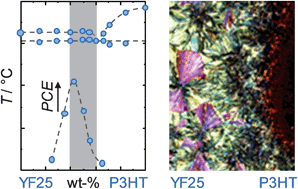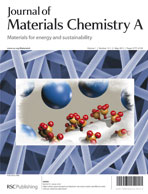Identifying the optimum composition in organic solar cells comprising non-fullerene electron acceptors†
Abstract
We explore the inter-relationship between the phase behavior and photovoltaic performance for two blend systems comprising poly(3-n-hexylthiophene-2,5-diyl) (P3HT) as the electron donating moiety and two newly developed small molecule non-fullerene


 Please wait while we load your content...
Please wait while we load your content...